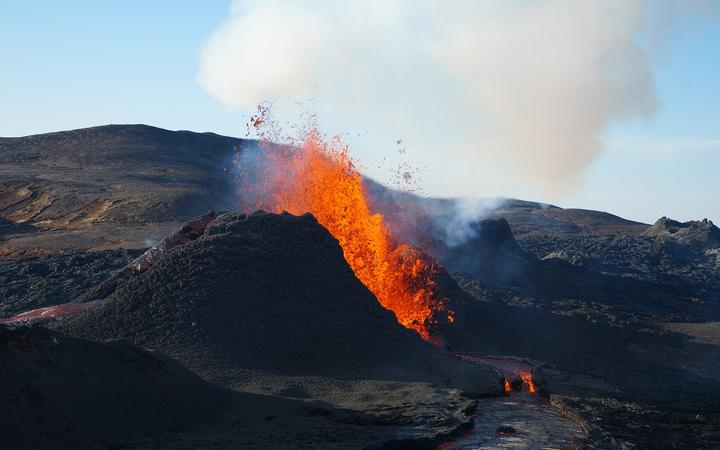The solar system had nine planets. Maybe he's still doing it? Here's the latest space news today
Some of us remember August 24, 2006 as if it were yesterday. That was the day Pluto was expelled from the exclusive "Planetary Club".
Show key points
- Pluto was reclassified as a dwarf planet in 2006 because it failed to meet one of the three criteria set by the International Astronomical Union for full planetary status.
- The discovery of other objects like Eris, which is more massive than Pluto, highlighted the need to redefine what qualifies as a planet.
- The demotion of Pluto indirectly sparked renewed interest and exploration of previously unknown celestial bodies in the solar system.
- ADVERTISEMENT
- In 2016, simulations suggested the possible existence of a ninth planet with a mass ten times that of Earth, located extremely far from the sun.
- Despite its potential size, this theoretical ninth planet remains undetected due to its extreme faintness and distance, although several candidates are being investigated.
- Exoplanets are primarily detected through transit and radial velocity methods, rather than direct imaging, due to their low light emissions.
- The James Webb Space Telescope is now providing unprecedented insights into exoplanetary atmospheres, including potential biosignatures like water vapor.
Even famous astronomers known for their public character stumbled upon mostly unapologetic explanations. It was a missed opportunity. What was badly advertised as a demotion was actually the discovery of exciting new organs in our solar system, the first of which was Pluto.
The good news is that astronomers have better media support now, and there is a lot of amazing science to catch. Let's dwell on what you may have missed.
Return to shocking demotion

Pluto's fate was almost certainly decided on the day Iris was discovered in 2005. Like Pluto, Iris orbits on the outskirts of our solar system. Although its radius is smaller than Pluto's, it has a greater mass.
Recommend
Astronomers have concluded that the discovery of objects like Pluto and Iris will only become more common when our telescopes become more powerful. They were right. Today there are five known dwarf planets in the solar system.
The conditions for what is classified as a "planet" as opposed to a "dwarf planet" were determined by the International Astronomical Union. In short, Pluto was not targeted in 2006. It did not meet the three criteria for a complete planet:
It must orbit a star (in our solar system it will be the sun)
It must be large enough that gravity forced it to take a spherical shape
It must be large enough that its gravity can remove any other objects of the same size close to its orbit.
The third criterion was the fall of Pluto. He did not clear the area next to him of other things.
Is our solar system destined to contain only eight planets? Not necessarily. There may be another one waiting to be found.
Is there a ninth planet?

With the discovery of new and distant dwarf planets, astronomers eventually realized that the movements of dwarf planets around the sun were not entirely logical. We can use complex simulations in supercomputers to model how gravitational reactions occur in a complex environment like our solar system.
In 2016, astronomers Konstantin Batijin and Mike Brown of the California Institute of Technology concluded — after modeling dwarf planets and their observed trajectories — that mathematically there must be a ninth planet. Their models determined that the mass of this planet should be about ten times that of Earth, located about 90 billion kilometers from the sun (about 15 times farther than Pluto). It's a very bold claim, and some are still skeptical.
One might assume that it is easy to determine whether such a planet exists or not. Just point the telescope at where you think it is and look, right? If we could see galaxies billions of light-years away, shouldn't we be able to detect the ninth planet in our solar system? Well, the problem is how bright this theoretical planet is. The best estimates indicate that it is located at the maximum depth of the largest telescopes on Earth. In other words, it can be 600 times fainter than Pluto.
But that doesn't stop us from looking. In 2021, a team using the Atacama Cosmology Telescope published the results of their search for the motion of a ninth planet on the outskirts of the solar system.
While they could not confirm his existence, they submitted ten candidates for further follow-up. Perhaps only a few years away from knowing what lies on the outskirts of our planetary neighborhood.
Finding exoplanets

Although we have telescopes that can detect galaxies from the early years of the universe, we still can't easily image planets just outside our solar system, also called exoplanets.
The reason can be found in basic physics. Planets emit very faint red wavelengths of light, so we can only see them clearly when they reflect the light of their star. The farther away the planet is from its star, the harder it is to see.
Astronomers knew they had to find other ways to search for planets in foreign star systems. Before Pluto's reclassification, they had already discovered the first exoplanet, 51 Pegasi B, using the radial velocity method.
So astronomers came up with another way to find exoplanets: the method of transit. When Mercury or Venus passes in front of the sun, they block a small amount of sunlight. Using powerful telescopes, we can look for this phenomenon in distant star systems as well.
We do this via the Kepler Space Telescope and the Exoplanet Survey Transit Satellite (TESS). Both have observed tens of thousands of stars and discovered thousands of new planets, dozens of them roughly the same size as Earth. But these observatories can only tell us the size of the planet and its distance from its star. They can't tell us if the planet hosts life. And for this we need the James Webb Space Telescope.
Looking for life

The James Webb Space Telescope (JWST) has just finished its first and a half year of science. Among his many achievements is the discovery of particles in the atmospheres of exoplanets, an achievement made possible by the method of transit.
One of these exoplanets, WASP-17, is also known as "hot Jupiter." It appears to have been snatched from a page in a science fiction novel, with evidence of quartz nanocrystals in its clouds.
The field of planetary studies is developing and 2024 seems promising. Perhaps the James Webb Space Telescope will finally produce signs of the presence of water vapor in the atmosphere of an exoplanet. Who knows, we might have a ninth planet that surprises us all, to fill the void left by Pluto.
Stay tuned for exciting science to come.
![]()
Habits that distinguish men from boys
Habits that distinguish men from boys more- ADVERTISEMENT
![]()
Why is the oud so popular in the Middle East?
The oud, with its deep roots in ancient Persia and warm, resonant sound, inspired the development of Western instruments like the guitar. Its fretless design gives Arabic music a unique depth, and its influence reached Europe through Andalusia, where it shaped musical traditions far beyond the Middle East. more- ADVERTISEMENT
![]()
The epic story of the Valley of the Kings in Luxor
Hidden under Egypt's desert sands, the Valley of the Kings holds grand tombs built to protect pharaohs like Tutankhamun and Seti I. Rich in secrets and treasure, it offers a journey into ancient history, where engineering genius met sacred beliefs in the afterlife. A mesmerizing destination for any explorer. more- ADVERTISEMENT
![]()
The best professional advice (in life) one can get
Choosing the right career can be tough, but combining self-assessment, research, and goal-setting with expert guidance makes the path clearer. Tools like MBTI and career mentors help align your job with your values, making your professional journey both successful and fulfilling. more- ADVERTISEMENT
![]()
Why does the Arab lands have so much oil?
Arab countries hold vast oil and gas reserves, with fields like Saudi Arabia’s Ghawar and Safaniya standing out for size and output. Their conventional oil is easier to extract and purer than other types. This wealth stems from rich ancient biodiversity buried under the region's lands over millennia. more- ADVERTISEMENT
![]()
The Power of Nature: Learn about the forces behind a living volcano
Living volcanoes are powerful natural wonders—windows into Earth’s fiery depths. They dazzle with beauty, yet threaten with eruptions. From shaping landscapes to offering geothermal energy, they reveal nature’s immense force. By studying their behavior, we can better predict their eruptions and harness their energy for a safer, sustainable future. more- ADVERTISEMENT
![]()
The Unity Economy: How Isolation Changes Our Buying Habits
Loneliness is becoming a social epidemic, affecting both young and old. Despite being more connected than ever, people feel increasingly isolated, often turning to consumerism for comfort—buying entertainment, luxury, or even companionship. Brands must respond by offering personalization and building communities that help people feel seen and included. more- ADVERTISEMENT
![]()
Integrating AI with Biotechnology – Concerns and Advantages
AI and biotechnology together are changing the game—speeding up drug discovery, improving diagnosis, and creating personalized treatments. They’re also boosting sustainable farming and designing smart materials. While full of promise, there are real concerns about privacy, bias, and job loss that demand careful attention and strict ethical guidelines. more- ADVERTISEMENT
![]()
Can companies avoid Kodak's future fate?
Can Companies Evade the "Kodak" Destiny in The Future? more- ADVERTISEMENT
![]()
Is time travel possible? Astrophysicist explains the science behind science fiction
Time travel fascinates us, but science shows it’s tricky. Einstein’s theory reveals time slows down at high speeds—astronaut Scott Kelly aged slightly slower than his twin Mark. Wormholes might allow time jumps, but they remain unproven. For now, telescopes offer a glimpse into the past, not time machines. more- ADVERTISEMENT





















